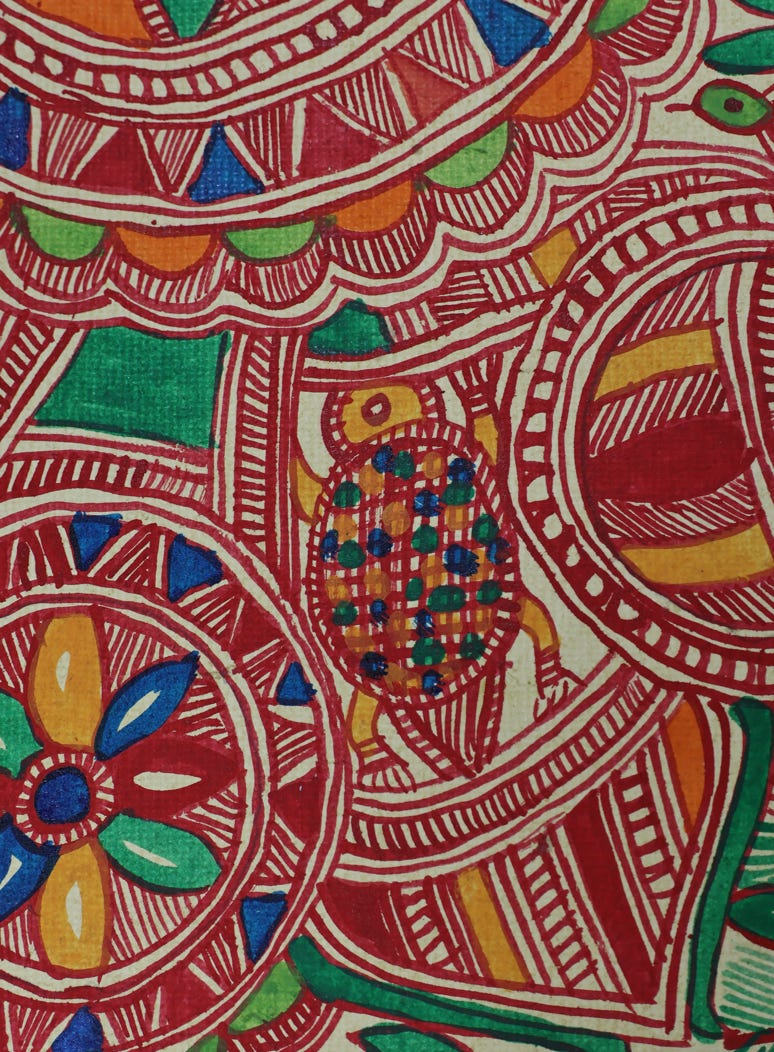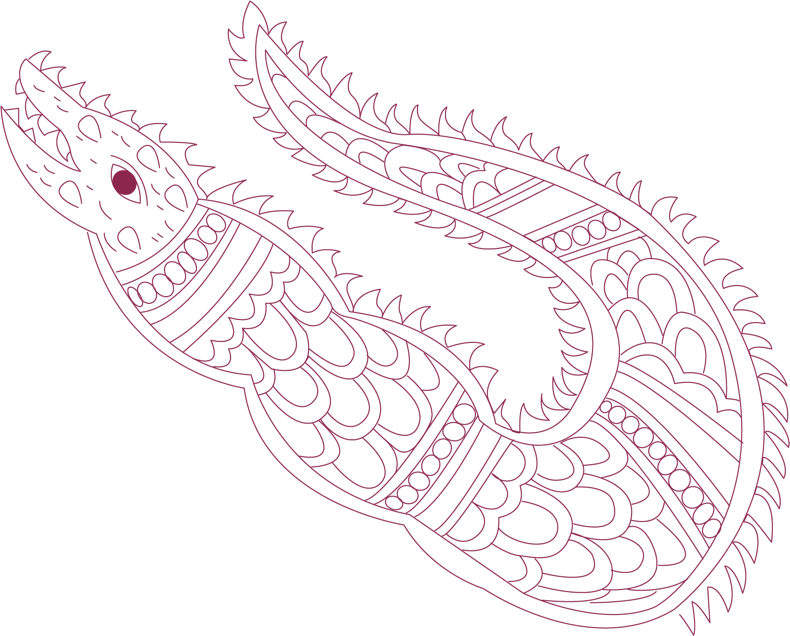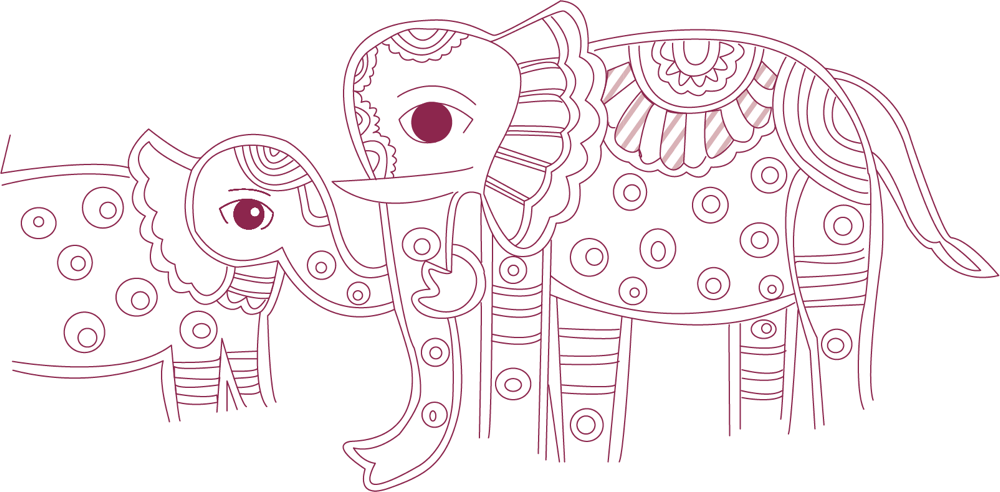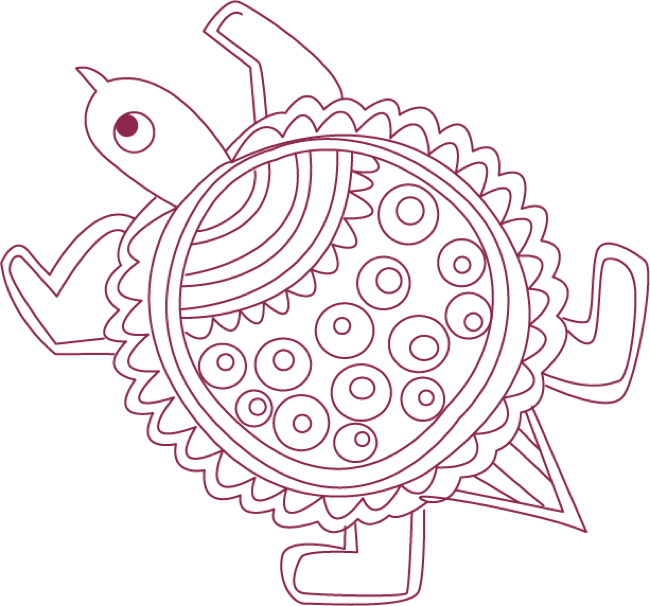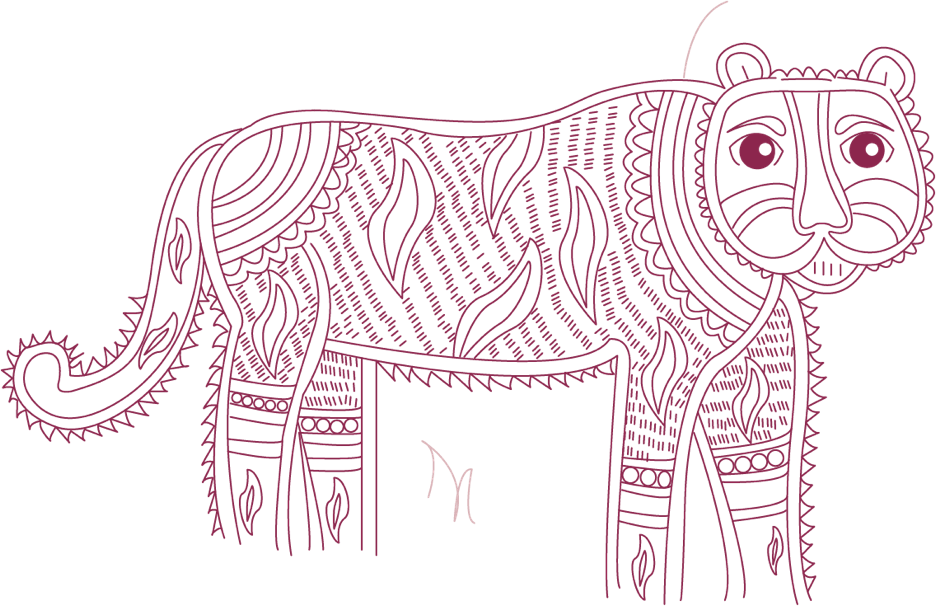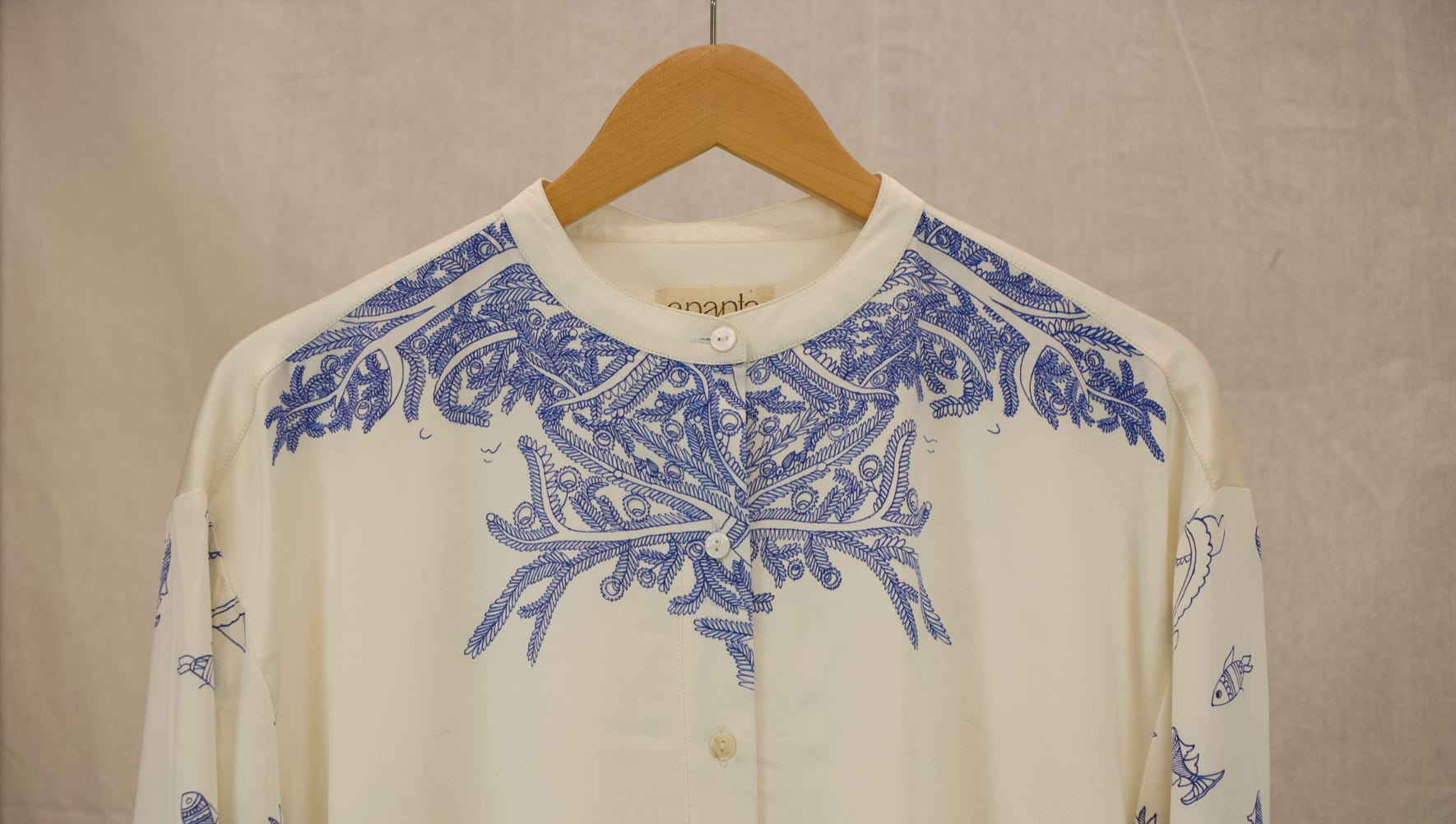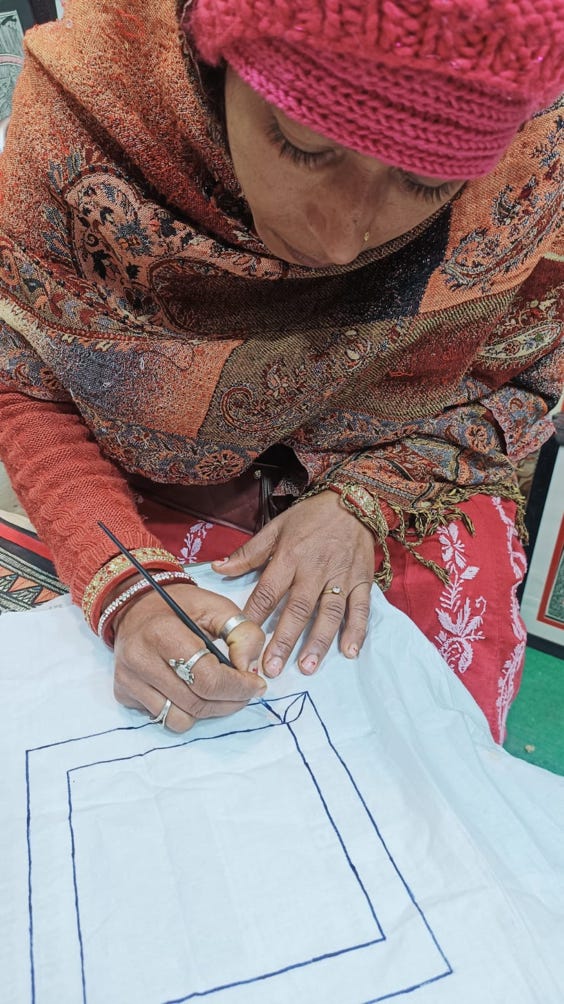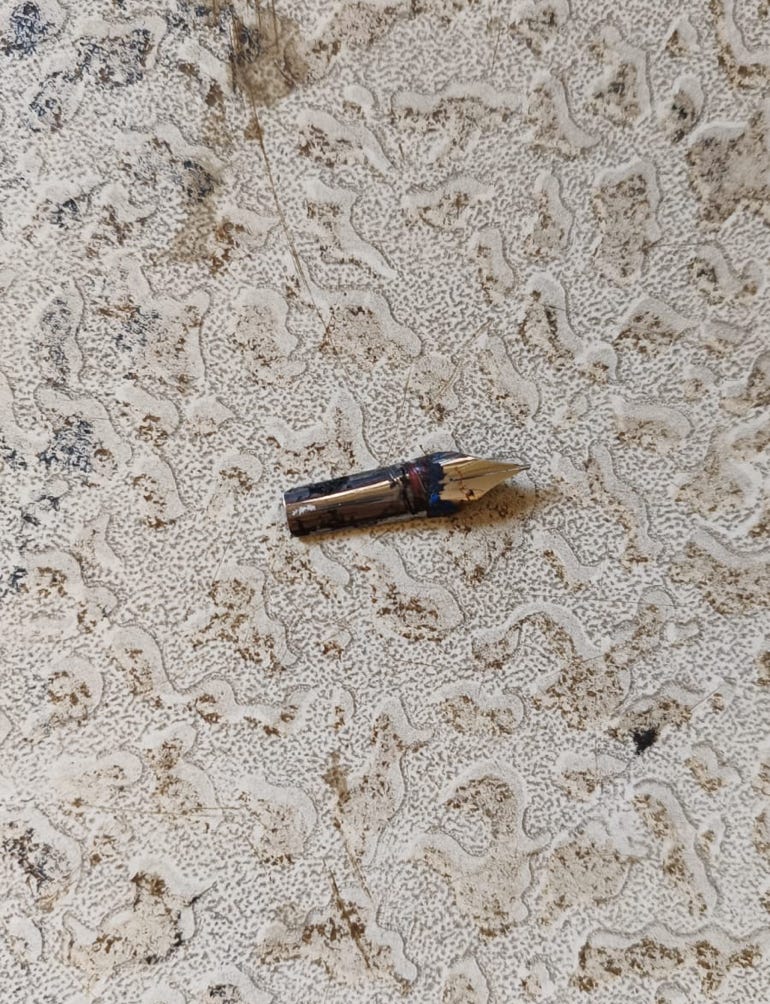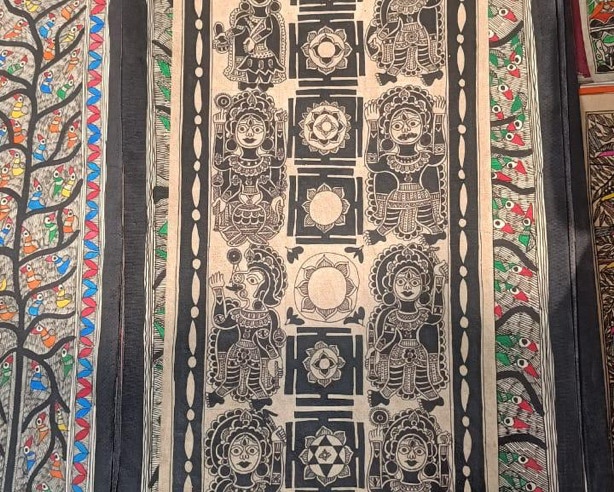
Madhubani
Madhubani art is a revered tradition practiced by the Hindu community in the Mithila region of Bihar. This intricate art form involves painting with fingers, twigs, brushes, nib pens, and even matchsticks, using natural dyes and pigments. It is renowned for its eye-catching patterns and vivid figures that narrate stories, capturing the essence of various occasions and festivals like birth, marriage, Holi, and Puja through vibrant paintings.

